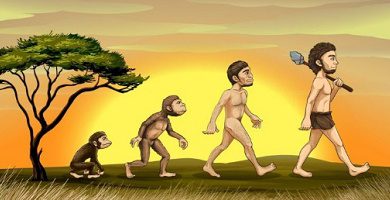What is perception?
We explain what is the perception and the components that psychology analyzes. In addition, what are the stages of perception.
-
What is perception?
Perception is the individual mechanism that human beings perform that consists in receiving, interpreting and understanding the signals that come from the outside , coding them from the sensitive activity. It is a series of data that are captured by the body as a raw information, which will acquire meaning after a cognitive process that is also part of the perception itself.
Just there lies the difference between perception and sensation, with which the term is often confused: while perception includes the interpretation and analysis of stimuli , sensation is the immediate experience that points to an involuntary and systematic response .
In short, perception refers to a mental image formed from human experience , which includes its form of organization, culture and needs. There are the two components of perception that analyzes psychology :
- the external medium that is precisely the sensation that will be captured (in the form of sound , image), and …
- the internal environment that is the way in which that stimulus will be interpreted (totally variable according to the individual).
This is why it is said that perception is subjective , it is selective, because people decide (sometimes unconsciously) to perceive some things and others not, and it is temporary because it will not occur forever but for a short time.
Reviewing the history of the study of perception, we can mention physiology , which in the nineteenth century was responsible for defining the functioning of the human psyche in the reception of stimuli, but that was precisely what led to psychophysics, a branch of psychology that precisely takes care of that.
Today, most studies on perception are oriented to advertising , which is desperate to try to understand how individuals perceive outside agents, seeking to find the best way to penetrate their needs and priorities.
-
Stages of perception

Among all, it has been determined that perception works with a three-stage process:
- Detection / Exposure As stated, individuals only perceive a small portion of the stimuli that are within their reach. However, this selection that is made is not made consciously, but not randomly. On the contrary, there are certain criteria that make a stimulus more easily perceived.
Regarding the stimulus, the larger the size, the more varied the color , greater movement , intensity, contrast and shock with what the individual expects to find, he probably has a greater capacity to be perceived. As regards the individual, individual needs and values, personal and collective tastes, interests and what is not harmful to your body or your spirit will be what is most easily addressed. - Attention / Organization. The assignment of a meaning to what you are perceiving has also been a matter of analysis . Probably the greatest contribution has been that of the Gestalt Psychological School, which delimited the laws in which people group their perceptions (on the basis that the content of the perception is not equal to the sum of the stimulus characteristics) . The most important are the following:
- Individuals organize the stimuli by specifically differentiating the figure and the background.
- They group the stimuli according to their proximity, linking to the things that are in continuous.
- In cases of non-complete sequences, it is sought to complete and close them, in order to contribute to the proportionality and balance in which we operate.
- Similar stimuli tend to group together.
- Interpretation. The final part of the process will be the one that will give content to the stimuli that were previously selected and organized. Here, the individuality of each person, with their previous experience and personal values, is much more at stake. However, habitual behaviors have been established at the time of this process, such as the creation of stereotypes , the projection of one’s own characteristics in others, or the few provisions to which not much is known.





